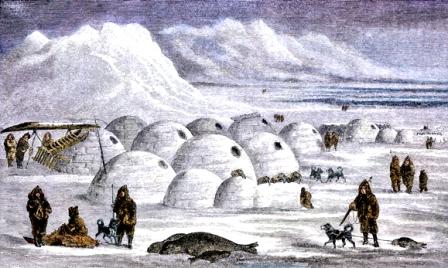Growing up in a suburb near Pittsburgh, my family would sometimes make the forty-five minute trek into the city to go see one of its many attractions and spectacles.
By far, my favorite place to go was the Carnegie Museum of Natural History, one of four highly regarded museums operated under the Carnegie Institute. Aside from their extensive collection of dinosaur fossils and vast conglomeration of ancient artifacts, I have always loved the Polar World exhibit above everything else.
Although outdated and slightly offensive in its portrayal of the indigenous people, by subtly promoting the ideals of colonialism and oppression, I was always fascinated by the Inuit way of life.
Living in the harsh arctic tundra regions of Northern Canada, as well as throughout Eastern Siberia, Greenland, and the state of Alaska, the Inuit peoples’ culture heavily focuses on their dependence and respect for the land and its natural resources.
Like other aboriginal people and native tribes, the Inuit only took from the earth what they needed. Surviving primarily on marine life and fish, the people used all parts of the animals they hunted to not leave any waste.

Early communities and settlements often used locally sourced materials to construct their homes and buildings, as they were easily accessible and in large quantities. While ancient Greek temples were built with domestic marble quarried in the nearby mountains and early American log cabins utilized timber from the surrounding forests, the Inuit people made use of the only abundant material present in their frigid climate: snow.
These subsequent dwellings, which were made entirely out of snow, are called Igloos, translating to “house” in Inuktitut, the indigenous North American language spoken in the Canadian Arctic. They were used as both family homes and temporary shelters for hunters and those in an emergency situation seeking protection from the harsh elements.
Based on their depiction in the media, many people immediately think of dome-shaped snow structures with an arched opening when the topic of igloos comes up . Unlike many other media portrayals, which come across as being stereotypical and culturally insensitive, this depiction is actually pretty accurate.
To construct an igloo, the Inuit people would begin by using a large knife or saw to carve out blocks of compressed snow. The blocks would then be arranged in a circular pattern, building upwards to form the dome shape. Narrow passageways, usually dug just below ground level, would allow access into the igloo. A small hole would need to be cut into the structure to allow for ventilation.

For igloos, the compressed snow acted as a good insulator, trapping in body heat and the heat generated from secondary sources, such as oil lamps and small stoves. While the statement sounds like an oxymoron, the microscopic pockets in the snow trap air inside and prevent it from circulating through the material.
While most igloos follow the basic pattern described above, different Inuit communities adopted different designs. Some, for example, used animal skins to line the inside of the shelters.
Although today, igloos are not commonly used amongst the Inuit people, they still remain a very significant part of their culture. In fact, many elders in the Inuit community take the time to teach their children how to build these snow dwellings to illustrate their tradition and heritage of living off of the land.
Wow! This was so informative I always wondered how igloos were made or how they were able to provide warmth and maintain it without melting. It is really beautiful that the elderly Inuit community passes on the knowledge of building these structures to the future generations. I also wonder if the sizing of the igloo varied by the average height of each family.
I feel like there is always some sort of mystery about igloos and it seems so far away from my existence, but it has always intrigued me. I think this shows how there is more than the “norm” of how homes are “supposed” to be. This is a beautiful part of a culture I’d love to learn more about
Igloos have long intrigued me. When I was a young girl, I was obsessed with polar bears and wanted to learn everything there was to know about the Arctic habitat that surrounded my favorite creature. Your post brought me back to my childhood as it was so wonderfully written as well as very informative!